Get PeakVisor App
Sign In
Search by GPS coordinates
- Latitude
- ° ' ''
- Longitude
- ° ' ''
- Units of Length

Yes
Cancel
Share ×

Scan the QR code and open PeakVisor on your phone
❤ Wishlist ×
Choose
Delete
Lake Shkodër is a protected area straddling the border of Albania and Montenegro. The lake is a nature reserve in Albania, a national park in Montenegro, and is home to numerous species of birds and fish. There are 26 named mountains in the reserve; the highest and most prominent is Maja Golishit (651 m/ 2,135 ft).
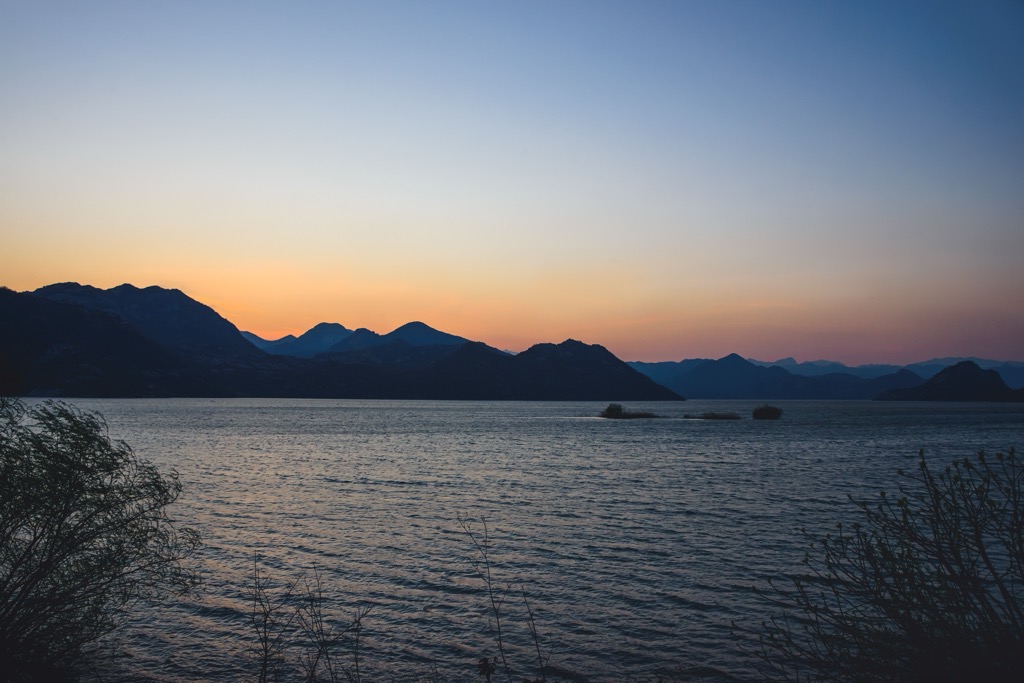
Lake Shkodër is in northwest Albania and shares a border with Montenegro. It links to the Adriatic Sea through the Buna River. Lake Shkodër spans an area of 360-540 sq. km (139-208 sq. mi) and is the largest lake in the Balkans. The lake is notable for its green, algae-covered shores and its seasonal fluctuations in size and water level.
The protected area encompasses the Albanian segment of the lake (14,900 ha) and the adjoining Buna River and plain (11,635 ha), including water and land areas. The lake itself measures 45 km (28 mi) in length and 13 km (8 mi) in width, gathering water from a watershed of 5,179 sq. km (2,001 sq. mi). The average depth varies from 7-10m (23-33 ft), with a maximum of 44 m (144 ft).
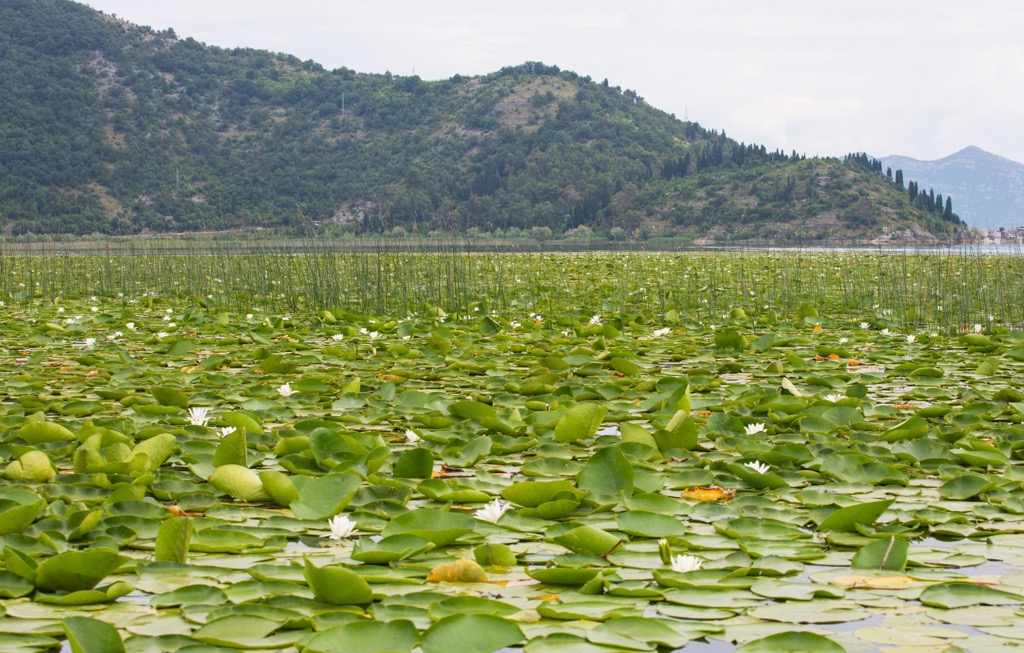
The western shores are rocky and made of limestone, while the eastern shores are low-lying and accumulative, leading to a delta. The lake's biodiversity arises from its array of ecosystems, including water areas, lowlands, and karst formations. As a result, it has been designated as a Ramsar site.
Approximately 600,000 people reside in the vicinity of Lake Shkodër. Agriculture, fishing, forestry, tourism, and recreation heavily depend on the area's natural resources and are the region’s primary economic drivers. Specifically, the lake region offers hiking, mountain biking, and various water sports.
However, these and other human activities impact the lake's ecosystem. The Lake Shkodër Nature Reserve safeguards the Albanian portion, while Lake Skadar National Park does so in Montenegro.
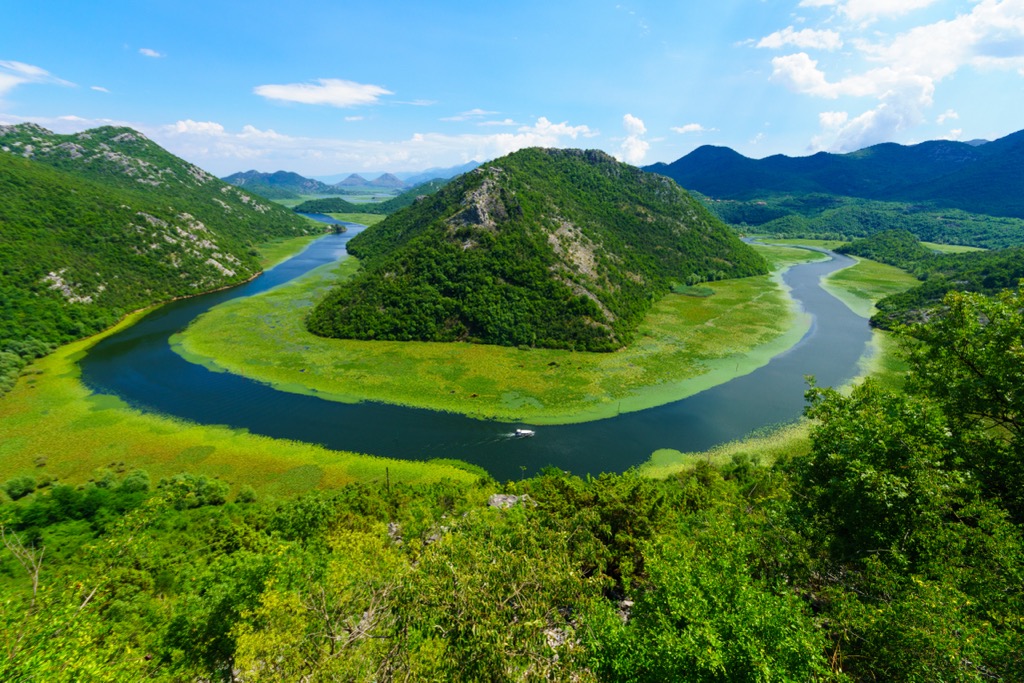
In the past, Lake Shkodër was much smaller. However, over time, particularly during the last century, it expanded due to a branch of the Drin River forming and flowing into the Buna River. The sediment from the Drin River is filling up the Buna River's bed, resulting in reduced water discharge and rising water levels. The increase in the lake's size is also linked to the slow sinking of the surrounding land.
The lake originated in the Neogene and Paleogene periods. Its origin occurred alongside the formation of the local karst topography from the Cenozoic era and the occurrence of local springs. Its basin formed alongside the Prokletije mountains.
The lake is only 9 m (29 ft) above the Adriatic Sea. Like the surrounding region, the Lake Shkodër region primarily comprises rocks like limestone and dolomite. This common karstic origin continually subjects the area to the process of karstification. Karst formations occur when water interacts with soluble rocks. Rainwater is naturally slightly acidic and dissolves the rock, creating underground streams, rivers, and caves that can lead to lakes; one of these is Shkodër.
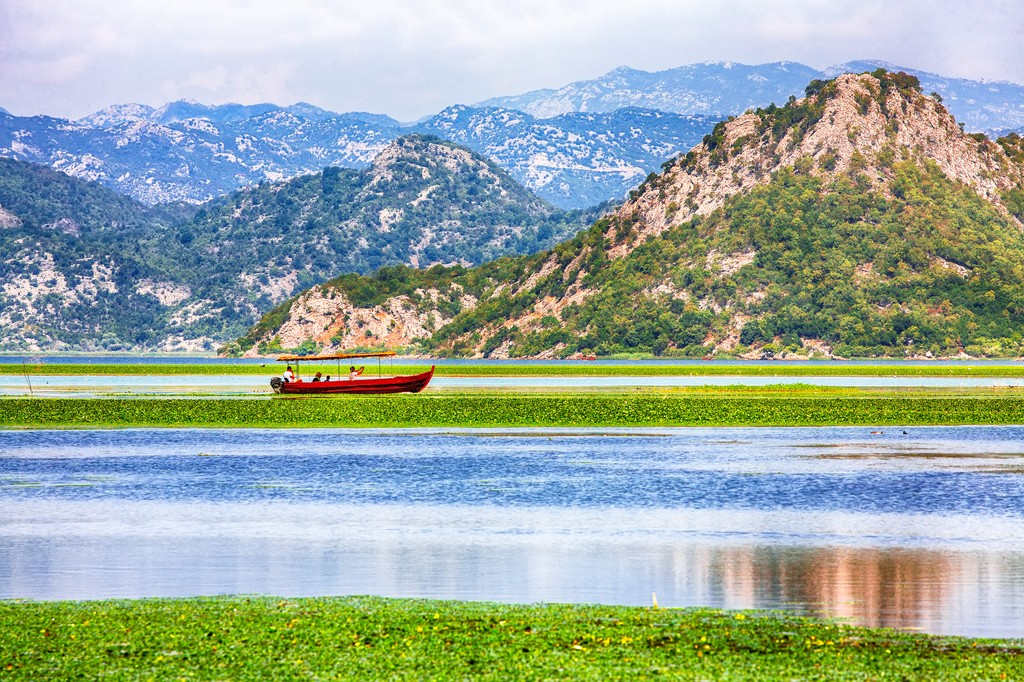
Lake Shkodër experiences considerable fluctuations in water levels. While surface water is the primary source, underground water also contributes to these variations. The Morača River and various mountain streams with irregular flows feed the lake. As the lowest point in the region, Lake Shkodër acts as a natural catchment for an extensive area.
The lake's waters are relatively warm. In February, the temperature averages 4–6°C (39–43°F), while the annual average is 16.3°C (61.3°F). The temperature difference between the surface and depths is minimal due to the lake's shallow nature. Consequently, oxygen permeates the water from top to bottom. Sediment and microorganisms reduce the water’s clarity, with watercolor ranging from green to dark blue.
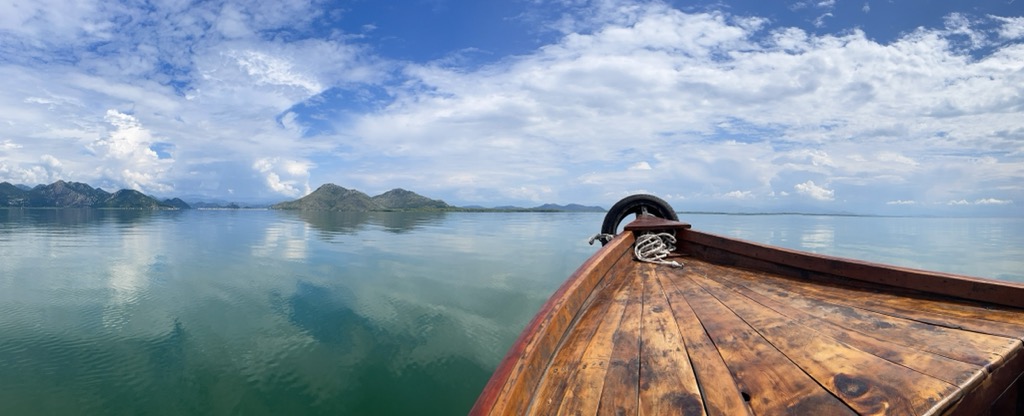
This sizable water body, teeming with fish and bird life, is designated an Important Bird Area (IBA) in Europe. It’s home to 270 bird species, including some of the last remaining pelicans in Europe.
As a result, it's a popular destination for bird enthusiasts. The lake and surrounding wetlands foster a thriving ecosystem, providing refuge to endangered species like the Dalmatian pelican and hosting around 40 waterfowl species, including the globally threatened Pigmy Cormorant (Phalacrocorax pygmeus).
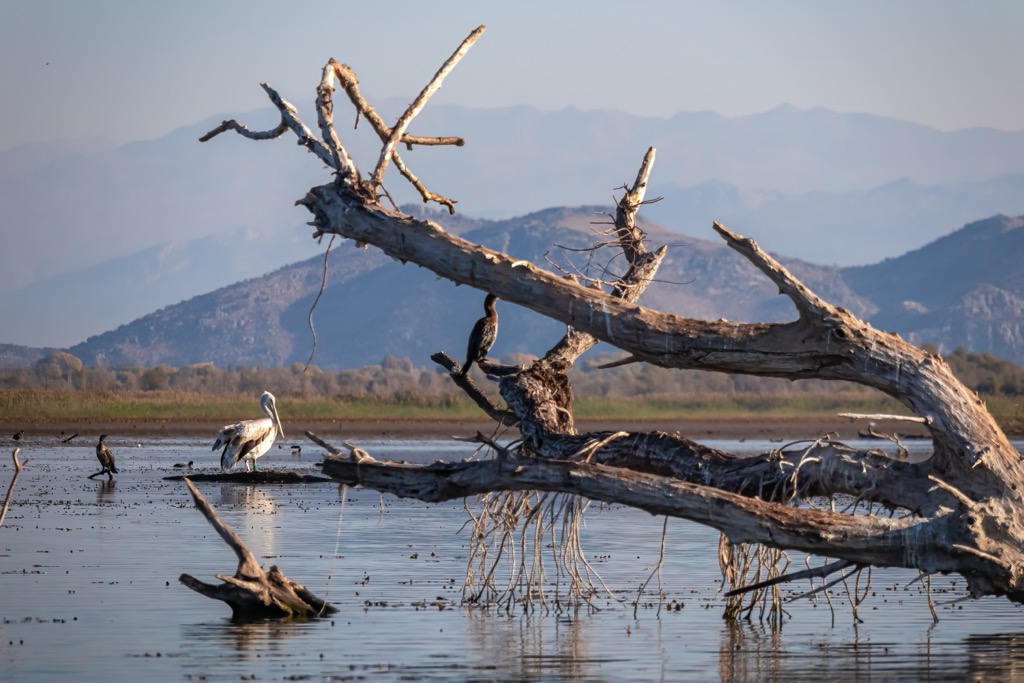
The lake is also vital for fish migration, with about 48 fish species inhabiting its waters, including common bleak and crucian carp populations.
The diverse mammalian community includes terrestrial species like moles, otters, squirrels, wolves, and wild boars. Reptiles find a home around Lake Shkodër, with a variety of lizards, snakes, turtles, and salamanders thriving in the area.
Lake Shkodër's subtropical climate and diverse habitats, including lakes, swamps, and rivers, have fostered the growth of various aquatic plants. These include submerged macrophytes and floating plants such as water lilies.
Floodplain forests, home to various willow tree species, provide shade during the warmer months. The park hosts diverse algae types that seasonally flourish in suitable conditions.
The ecosystem's well-being is closely tied to its basin and the surrounding areas that channel water into the lake. Despite its ecological importance, Lake Shkodër faces threats from pollution, unsustainable practices, and mismanagement. Organic sewage from surrounding areas and chemical pollution from industrial activities impact the lake's surface and underground waters.
Fishing in the lake has declined over recent decades due to overexploitation, illegal methods, competition from invasive species, and habitat degradation due to pollution and shoreline destruction.
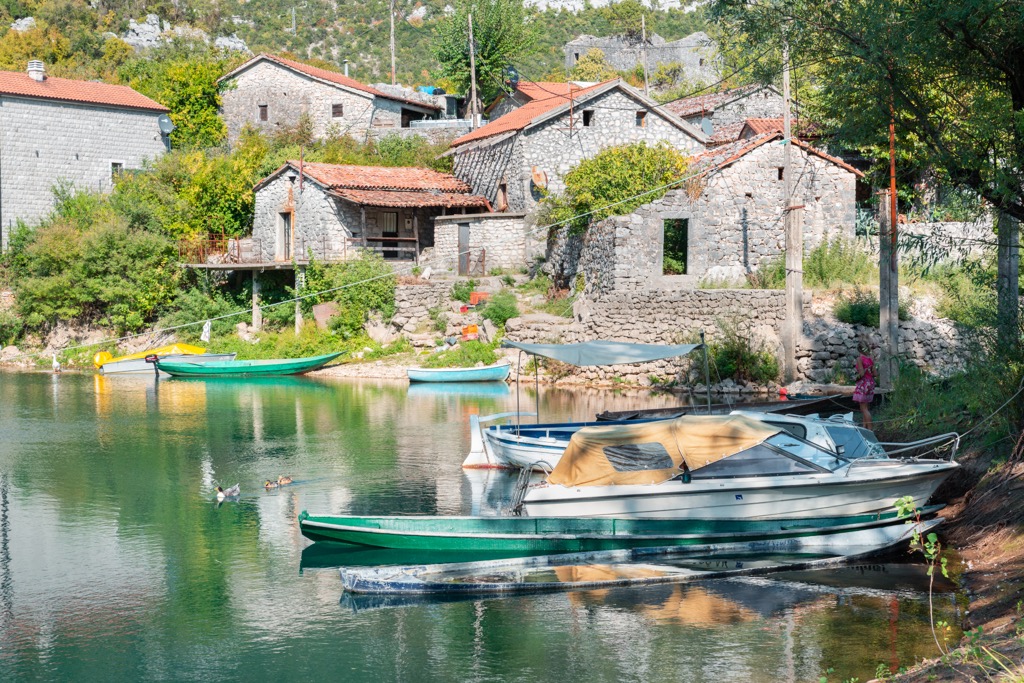
An Illyrian tribe called the Labeats initially inhabited the area around Lake Shkodër, settling there during the Iron and Bronze Ages. During this time, the lake might have been known as Lakus Labeatis, named after the Labeatae people who lived in the region.
The Illyrians established cities, constructed defenses, and developed various industries, including metalwork, ceramics, and stonemasonry. The heart of the Illyrian state is believed to have centered around Lake Shkodër.
In the second century, the Romans conquered the Illyrians and built more impressive settlements nearby. The basin of Lake Shkodër later became the core of Duklja in medieval times, which later transformed into Zeta and, ultimately, Montenegro. The first ruling family in the region was the Vojislavljević family, succeeded by the Nemanjić, Balšić, and Crnojević families.
The Petrović family's era saw the lake become a battleground between Montenegrins and Ottomans in Albania. Despite shifting empires, local life and culture around the lake persisted.
Many of the boats on the lake are handcrafted by local artisans using materials like wood from the area's chestnut, mulberry, and oak trees. Historical houses used for storing fishing equipment or curing catches still stand, restored to their original condition. Mills, bridges, and pathways line the lake, showcasing traditional architecture dating back over a century.
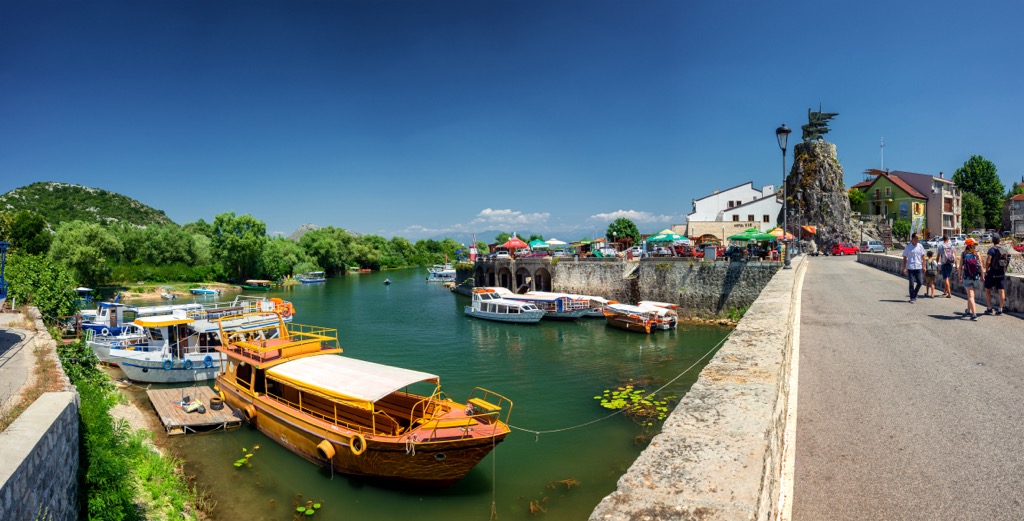
One iconic example of local historical architecture is Rozafa Castle, also known as Shkodër Castle, near Shkodër City in Albania. Rising prominently on a rocky hill, it overlooks the confluence of the Buna and Drin Rivers.
According to legend, three brothers attempted to build the castle, but the walls would repeatedly collapse each night. One day an old wise man wandered by the castle and offered a solution; a sacrifice was essential to ensure the castle's stability. Rozafa, the youngest daughter-in-law of the household, was unaware of the request and unwittingly showed up at the next day’s lunch, only to be chosen as the victim.
I have but one request to make. When you wall me in, leave a hole for my right eye, for my right hand, for my right foot and for my right breast. I have a small son. When he starts to cry, I will cheer him up with my right eye, I will comfort him with my right hand, I will put him to sleep with my right foot and wean him with my right breast. Let my breast turn to stone and the castle flourish. May my son become a great hero, ruler of the world.
A striking sculpture of Rozafa's figure carved into the wall greets visitors at the castle entrance. The legend did not appear in documented history until about 1505, nearly 2000 years after the first construction of the castle.
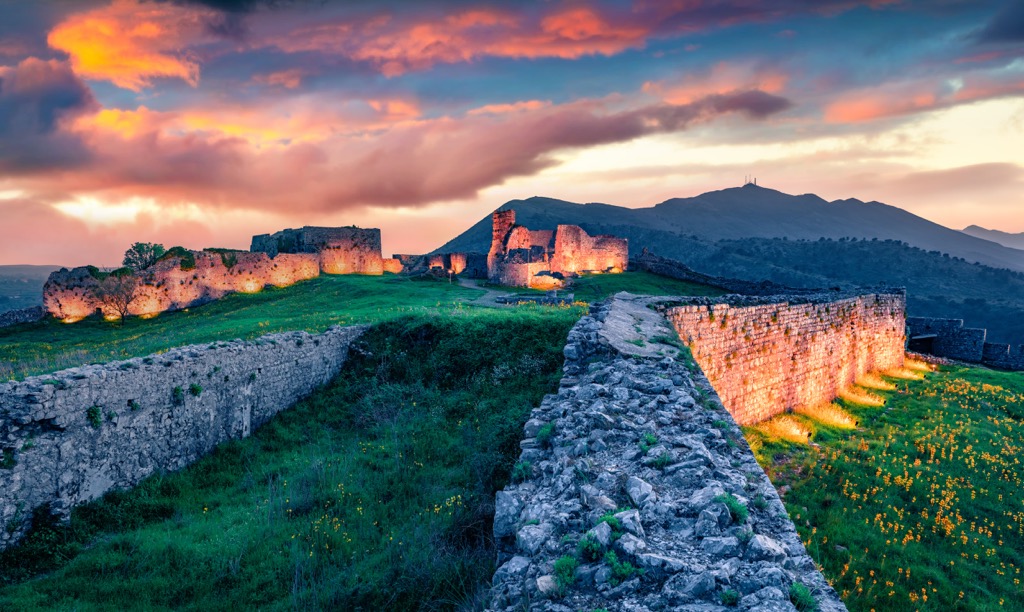
We recommend these hikes inside Lake Shkodër Nature Reserve:
This hike covers a distance of 17 km (10.6 mi) and a total elevation gain of 710 m (2,329 ft), reaching the highest point of 651 m (2,136 ft) at Maja e Golishit. The ridge spans 2 km (1.2 mi), giving you ample time to admire the views.
Spring is the best season for this hike due to the pleasant temperatures. Remember to carry enough water, as no water sources exist on the trail. To begin, travel to Shiroke village, roughly 12 km (7.5 mi) from Shkodër City.
Finding the trailhead is easy, and there's convenient parking available. On Maja e Golishit’s summit, you'll be treated to a panoramic view in all directions, encompassing the nearby mountains, Shkodër Lake, and the Adriatic Sea.
This fortress was constructed in the 4th century BC and was resilient through the Roman and Ottoman empires. It is easy to get to; the loop trail starts at the Ura e Re e Bunës bus station, where you circle the castle and then hike up to it. It’s 4 km (2.5 miles) with an elevation gain of only 100 m (328 ft).
This hike is the only place to enjoy Lake Shkoder’s Albanian side. It is 8.8 km (5.5 mi) long, takes about two hours, and is accessible to hikers of nearly all levels. It also features a birdwatching tower along the way. You can extend it into a bike ride and head to Shiroke from Shkodër.
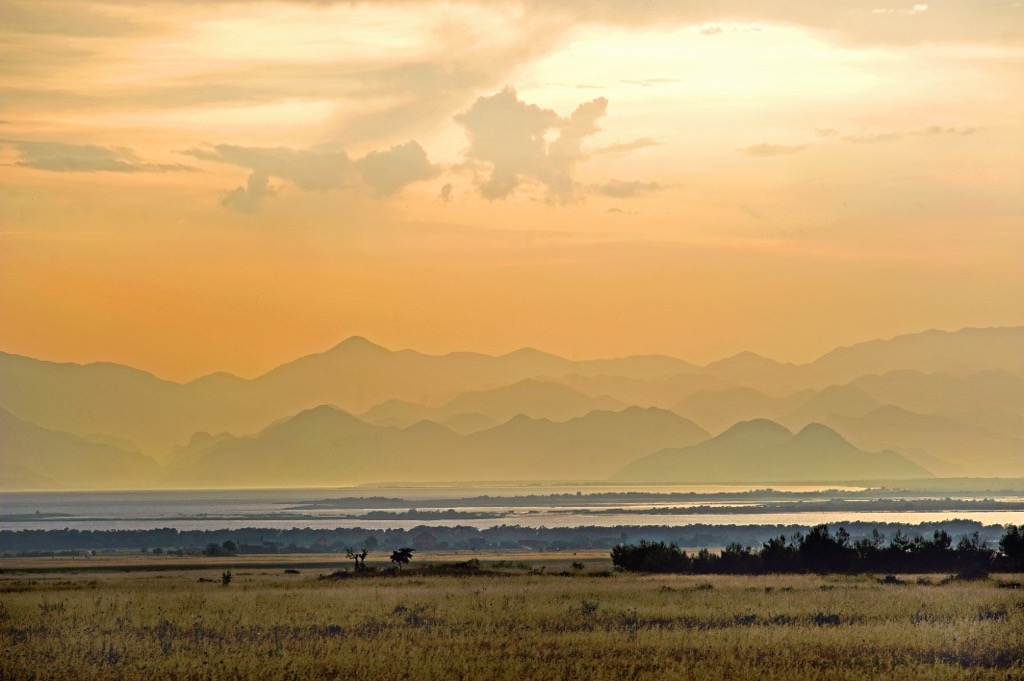
The biggest cities near Lake Shkodër Nature Reserve include:
Shkodër is a city in northwestern Albania, nestled near the shores of Lake Shkodër. With around 100,000 residents, it's one of the country's major urban centers. The city boasts a rich historical heritage, featuring landmarks like Rozafa Castle, which offers panoramic views of the lake and surrounding areas. Shkodër is a hub for arts, culture, and education, with museums, theaters, and universities.
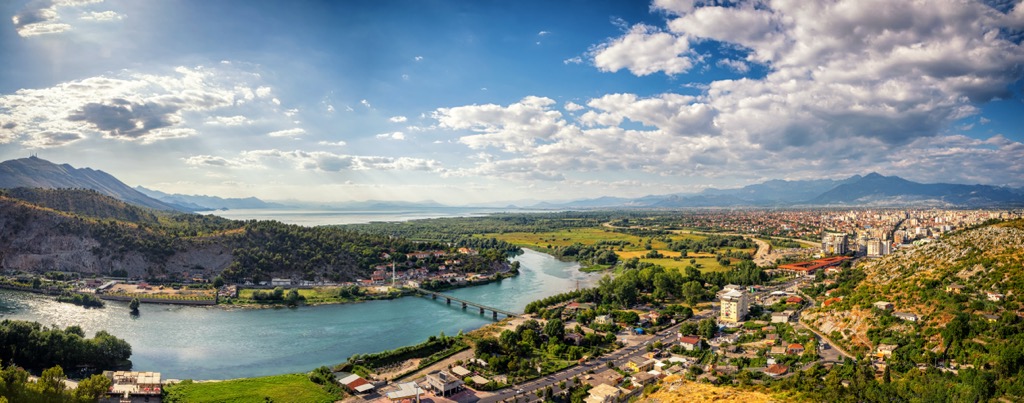
It is a small town in northern Albania, situated in the Albanian Alps. It has a population of approximately 4,000. Known for its picturesque setting and proximity to the mountains, Koplik is a starting point for outdoor activities like hiking and exploring the area’s rugged landscapes. The town is characterized by its serene ambiance and traditional Albanian architecture. It offers a glimpse into rural life and is a gateway to the natural beauty of the surrounding region.
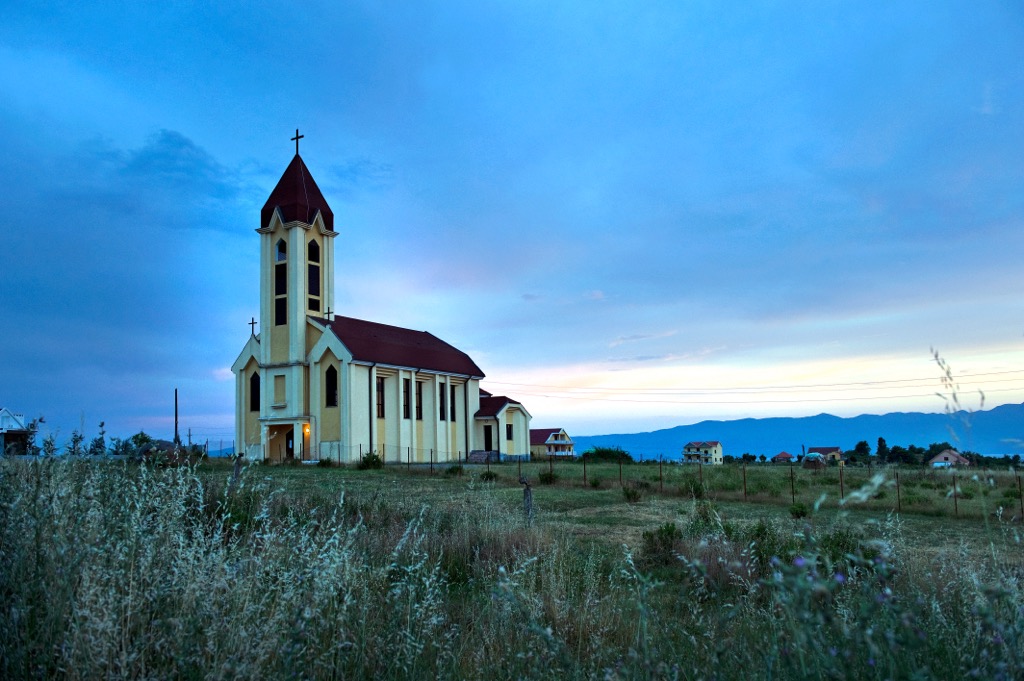
It is a coastal town in southern Montenegro on the Adriatic Sea. With a population of around 42,000, it's a significant economic and cultural center of the region. Bar is renowned for its historical sites, including the Bar Old Town, with its medieval ruins. The town's waterfront area is a hub of activity, featuring beaches, cafes, and a marina. Additionally, the nearby Skadar Lake National Park and surrounding mountains allow nature enthusiasts to explore diverse landscapes.
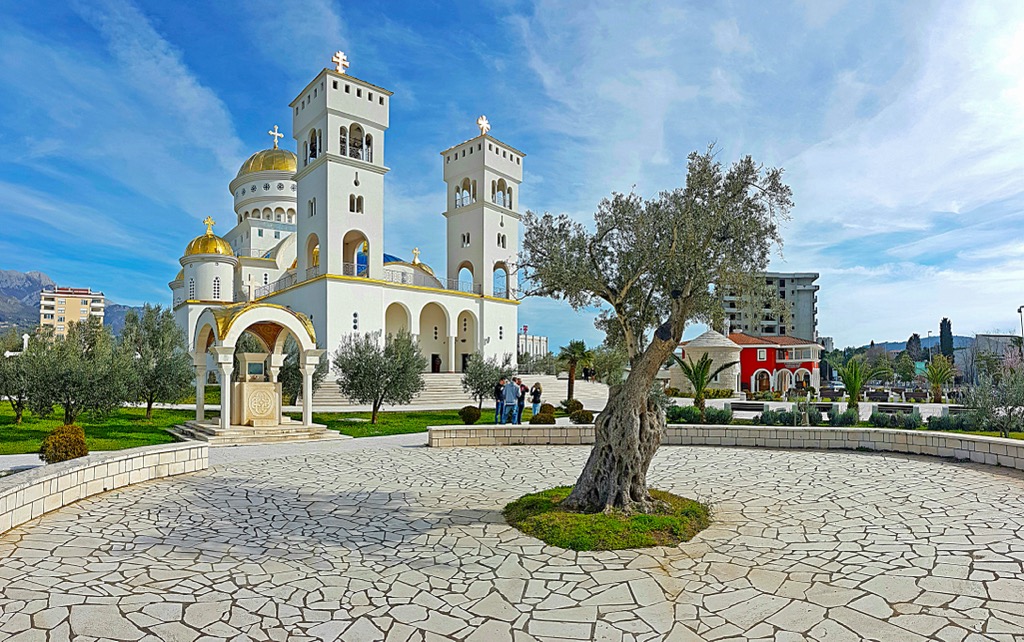
Explore Lake Shkodër Nature Reserve with the PeakVisor 3D Map and identify its summits.








